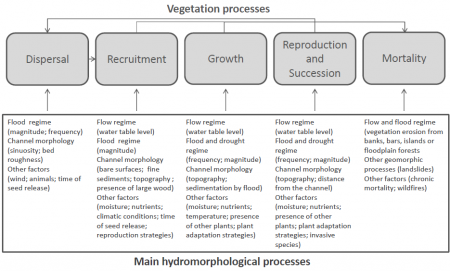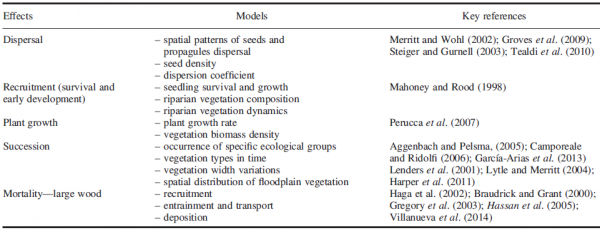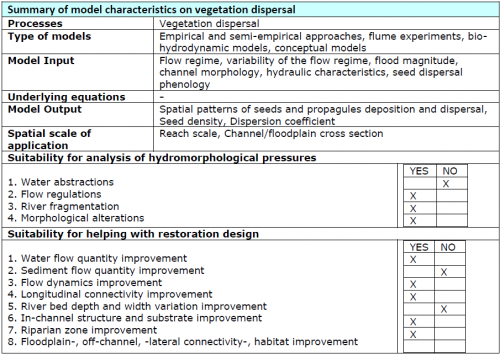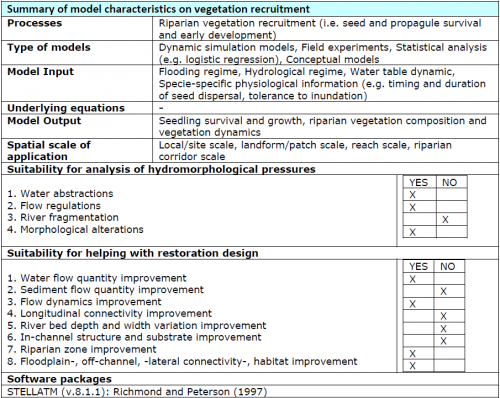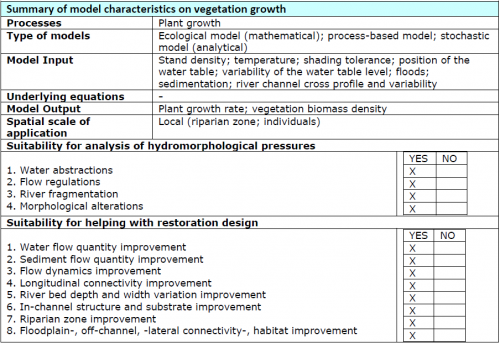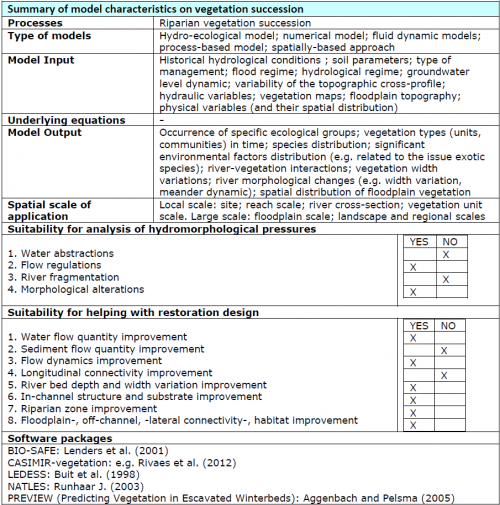Effect of hydromorphology on vegetation
Among the several abiotic (e.g. water chemistry, light and wind) and biotic (e.g. competition, invasive species) factors that influence riparian vegetation processes, fluvial hydrodynamics (i.e. flow and flood regime, and related processes) plays a significant role in all plant life stages (see Figure 1 and Table 1): dispersal, colonization, recruitment, growth, succession and mortality.
Tables 2 to 5 indicate the suitability of the models including the effects of hydromorphology on vegetation (dispersal, recruitment, growth and succession) for the analysis of hydromorphological pressures or the design of restoration measures.
- Vegetation dispersal
- Vegetation recruitment
- Vegetation growth
- Vegetation succession
Key future modelling challenges to improve the understanding of the influence of hydromorphology on riparian vegetation, that also fall within the scope of ecosystem management, are (see also Bornette et al., 2008; Osterkamp and Hupp, 2010; Camporeale et al. 2013; Gurnell, 2014):
- The spatial and temporal dynamics of soil moisture and water table which influence several stages of plant development (recruitment on new sites, plant survival and growth);
- The understanding of the impact of stochastic variability of river discharge on vegetation processes and patterns;
- The development of quantitative ecological models of vegetation succession;
- The understanding of the response of different vegetation traits to a wide range of physical (fluvial) disturbances;
- There is a need for models which address riparian plant growth rates at the scale of individuals and by comparing difference propagule responses (e.g. different species);
- The understanding of the effect of climatic change and related disturbances.
